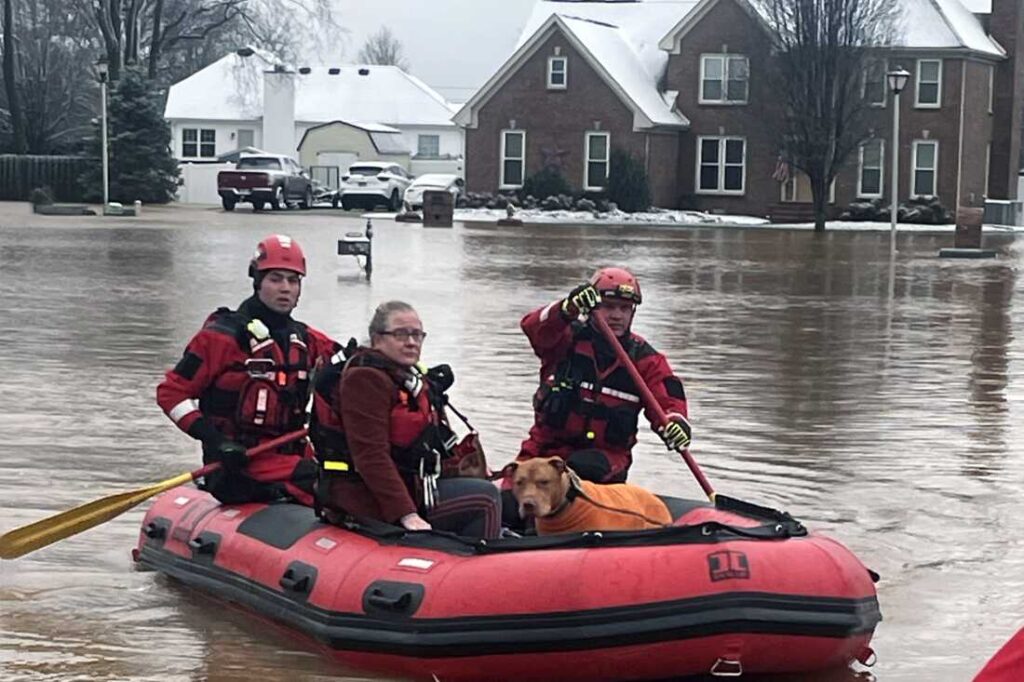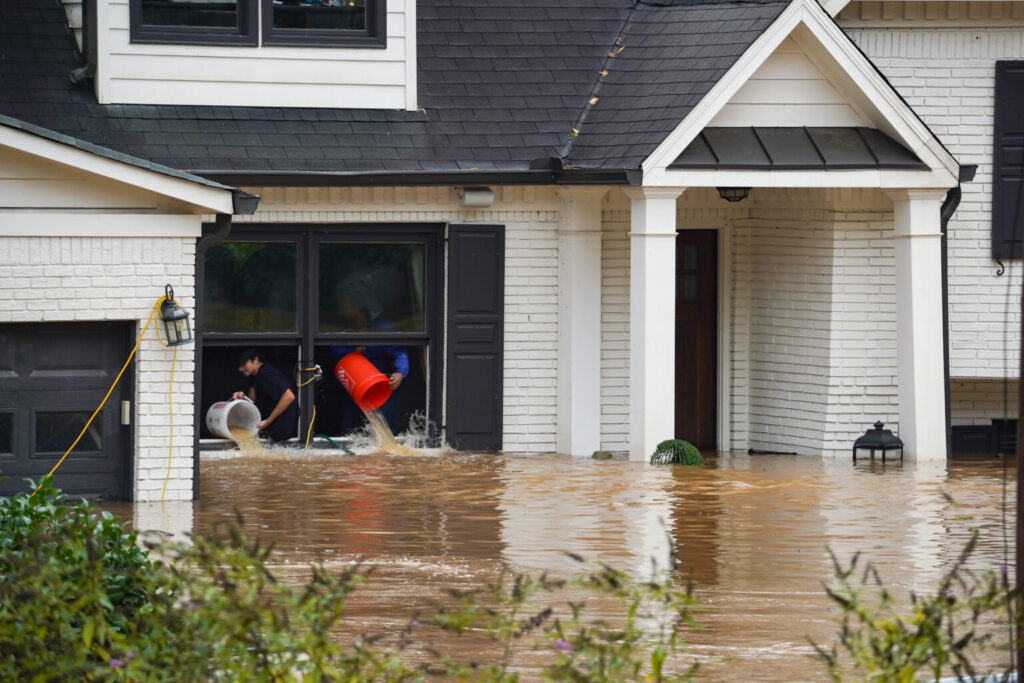In recent days, the U.S. South has been battered by relentless rain and unprecedented flooding. Communities across states like Kentucky have been forced to confront the stark realities of nature’s fury, with swollen rivers breaching floodwalls, mandatory curfews being enforced, and residents evacuating their homes under the threat of catastrophic water levels. As the crisis unfolds, experts stress that this is not merely an isolated weather event—it is a clarion call to enhance our preparedness for extreme weather conditions. This article examines the current flooding crisis, its regional and national implications, and provides an in-depth guide on protecting lives and property when faced with severe weather.
A Deluge of Unprecedented Flooding
Days of continuous downpours have transformed calm neighborhoods into dangerous flood zones. The Associated Press reported that heavy rainfall has overwhelmed rivers in the U.S. South, resulting in record-high water levels and significant loss of life. In certain Kentucky towns, for example, the Kentucky River surged to nearly 49.5 feet—just two feet below the floodwall’s maximum capacity of 51 feet. Drone footage vividly captured the devastation, with entire streets and homes submerged under rushing waters, underscoring the sheer force of nature.
Officials have confirmed that flash flood warnings, coupled with tornado alerts, have heightened the risk for additional casualties. Early estimates indicate at least 16 fatalities, with emergency services stretching their resources to reach affected areas and rescue those in danger. Local leaders and meteorologists alike emphasize that such extreme weather events, though not entirely unprecedented, may signal a trend toward more frequent and severe climatic disruptions.

Frankfort Under Siege: The Heart of the Crisis
Frankfort, Kentucky, has become one of the epicenters of this crisis. With the Kentucky River approaching the floodwall’s limits, local authorities have taken drastic measures to mitigate risk. A mandatory curfew was imposed from 8 p.m. Sunday through 6 a.m. Monday in low-lying areas of the city, including South Frankfort, North Frankfort, Holmes Street, Bellepoint, and parts of Blanton Acres. In these vulnerable zones, residents have reported water surging into basements and along streets, prompting urgent evacuations and widespread disruption of daily life.
Live coverage from local media outlets, such as WLKY, shows the precarious state of the flood defenses. As officials work to secure sandbags and other temporary barriers, the race against time intensifies. Emergency crews from neighboring states have converged on Frankfort to bolster rescue efforts and provide critical support, emphasizing the gravity of the situation.
Regional Impact and National Implications
While the situation in Kentucky captures headlines, similar scenes are unfolding across the South and Midwest. The widespread flooding has forced schools and businesses to close, disrupted transportation networks, and stressed emergency response systems across multiple states. This regional crisis is a reminder of the broader challenges posed by extreme weather events—a pattern that experts associate with shifting climatic conditions.
The scale of the current flooding is prompting calls for a reassessment of existing infrastructure and disaster preparedness plans. Communities and governments are now faced with the daunting task of not only addressing immediate rescue and relief operations but also investing in long-term strategies to mitigate future risks. As researchers delve into the potential connections between these extreme events and broader climate trends, the urgency for comprehensive resilience planning becomes ever more apparent.
Extreme Weather Protection: Proactive Measures to Combat Floods
Given the increasingly unpredictable nature of weather patterns, one of the most critical takeaways from this crisis is the need for effective extreme weather preparedness. Approximately one-third of this discussion is devoted to practical measures that individuals, families, and communities can implement to protect themselves in the face of heavy rains and flooding.
Pre-Event Preparedness
- Develop an Emergency Plan:
- Evacuation Routes and Meeting Points: Identify multiple escape routes and designate a safe meeting place for family members in case of evacuation.
- Communication Strategy: Establish a reliable method of communication, such as a group chat or phone tree, to keep everyone informed.
- Assemble an Emergency Supply Kit:
- Essentials: Stock up on water (at least one gallon per person per day for several days), non-perishable food, flashlights, batteries, and a first-aid kit.
- Documentation: Keep copies of important documents (insurance policies, identification, medical records) in a waterproof container.
- Additional Supplies: Include personal medications, extra clothing, blankets, and a multi-tool or basic repair kit.
- Secure Your Property:
- Flood Barriers and Sandbags: If you live in a flood-prone area, invest in sandbags and temporary flood barriers.
- Home Modifications: Consider elevating electrical systems and appliances, installing backflow valves, and using water-resistant materials for vulnerable parts of your home.
- Landscape Management: Ensure that gutters, drains, and culverts are clear of debris and functioning properly to facilitate water runoff.
- Stay Informed:
- Weather Alerts: Sign up for local weather alerts and follow trusted news sources to stay updated on evolving conditions.
- Local Emergency Services: Familiarize yourself with the local emergency operations center (EOC) contact numbers and community evacuation plans.

During the Storm
- Follow Official Instructions:
- Evacuate Early: If local authorities issue an evacuation order, leave as soon as it is safe to do so. Avoid waiting until the situation becomes critical.
- Seek Shelter: If evacuation isn’t possible, move to the highest level of your home and avoid basements or lower areas where floodwaters can accumulate.
- Avoid Floodwaters:
- Safety First: Do not attempt to drive or walk through flooded areas. Even shallow water can hide dangerous debris or fast-moving currents.
- Stay Connected: Keep your mobile device charged and with you at all times to receive emergency alerts and instructions.
- Monitor Local News:
- Live Updates: Rely on local news stations and official social media channels for real-time information about road closures, rescue operations, and safe zones.
Post-Flood Recovery
- Assess the Damage Safely:
- Professional Inspections: Have qualified professionals inspect your property for structural damage before re-entering, particularly if there is a risk of electrical hazards or gas leaks.
- Document the Damage: Take photos and notes for insurance claims and potential disaster relief assistance.
- Prevent Further Hazards:
- Sanitize and Disinfect: Floodwaters can carry harmful bacteria and contaminants. Clean and disinfect your home thoroughly to prevent mold and health hazards.
- Seek Assistance: Contact local emergency management agencies for guidance on restoration and available financial assistance programs.
- Learn and Adapt:
- Evaluate Preparedness: After the immediate crisis has passed, review the effectiveness of your emergency plan and update it based on lessons learned.
- Community Involvement: Engage with local authorities and community groups to advocate for better flood defenses and resilient infrastructure improvements.

Implementing these strategies not only minimizes immediate risks during an extreme weather event but also contributes to long-term community resilience. By taking proactive steps, individuals and families can significantly reduce the impact of floods and other severe weather phenomena.
Long-Term Resilience and Infrastructure Upgrades
As the current crisis underscores the limitations of existing flood defenses, there is a growing recognition that long-term investments in resilient infrastructure are essential. Urban planners, engineers, and government officials are increasingly focusing on sustainable solutions, such as:
- Modernizing Floodwalls and Dams: Upgrading existing barriers to withstand higher water levels and extreme weather conditions.
- Improving Urban Drainage Systems: Enhancing stormwater management to prevent blockages and reduce runoff during heavy rains.
- Restoring Natural Floodplains: Allowing rivers to overflow into designated areas can help mitigate the force of floodwaters while preserving natural ecosystems.
- Implementing Smart Technology: Using real-time monitoring systems to predict flood events and manage emergency responses more effectively.
These long-term measures, coupled with improved public awareness and community preparedness, are critical to reducing vulnerability and protecting lives in an era of increasingly extreme weather.
The ongoing flood crisis in the U.S. South is a stark reminder of nature’s unpredictability and the urgent need for robust extreme weather preparedness. From the immediate challenges faced by residents in Kentucky to the broader implications for regional infrastructure, every stakeholder must prioritize both short-term rescue efforts and long-term resilience strategies. By adopting proactive measures—such as developing emergency plans, securing property, and staying informed—individuals can better safeguard themselves against future disasters. Ultimately, building a culture of preparedness and investing in resilient infrastructure will not only help communities recover from today’s events but also protect them against the uncertainties of tomorrow.



